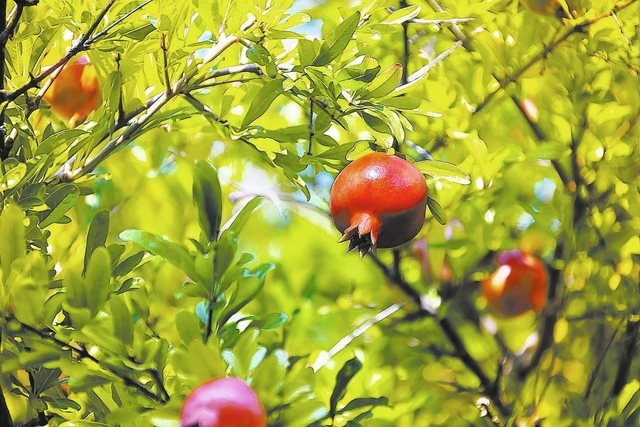Plants in containers require special care
Q: I was wondering if there is a trick to container gardening. I have been using potting soil, along with plant food, and my plants keep wilting. What am I doing wrong?
A: There are two things you should be aware of regarding watering and containers in our climate. Don’t use small containers, and never let the soil get too dry before you irrigate again.
Small containers do not work well here. They don’t hold enough water, and their soil volume is small so it heats up rapidly. Large plants in small containers use the water in the soil quickly.
When the soil dries, it shrinks from the sides of the container. When the soil shrinks and pulls away from the sides, applied water flows down the inside of the container without wetting the soil. You see it run out the bottom and think you have wetted the soil when in reality it is still dry.
Plant water use can be 25 percent to 40 percent higher in our hot, desert climate. You have to use larger containers to compensate for this higher water use or water more often. If containers are left exposed to the sun, the soil in the container dries rapidly and can get very hot.
Most plant roots are not as tolerant to heat as their tops. Larger soil volumes provide a better cushion against high soil temperatures. Also, wet soils are slower to get hot than drier soils, so irrigate containers just prior to the heat of the day.
Here are some other suggestions:
When wetting a very dry container soil, use a couple of teaspoons of liquid detergent in a gallon of irrigation water to help the water penetrate the soil. Add the detergent after the bucket is full of water.
Always make sure water can drain from the container directly out of the bottom to keep salts moving through the soil profile. Our tap water from Lake Mead has lots of salt in it.
When watering, let about 20 percent of your applied water (one-fifth of the volume applied) run out the bottom. This helps flush salts out of the container.
Replenish container soil regularly. If container plants are annuals such as vegetables, replenish one-fourth to one-third of the soil each time you plant. If the container plant is a perennial such as a fruit tree, remove and replant the tree every two to three years. When replanting, prune the roots as well as the top to bring it back into scale with the container.
Shade the container from direct sun during the day. You can do this by placing the container inside a larger container. This is called double-potting.
Use an inexpensive soil moisture meter made for houseplants to give you a rough idea if the soil is wet or dry.
Otherwise, lift or push the container. Containers get much lighter when it is time to water. Lift or push it after you finish watering as well. This helps reassure you that the soil is wet.
Fertilize lightly once every one to two months during the growing season.
Q: This year the fruit on my pomegranate, which has in the past always been large and healthy, is anemic looking. Several are developing rotten spots and dropping prematurely. The tree is 30-plus years old. Any recommendations as to the cause and cure?
A: Most pomegranates will not be ready for harvest until around Halloween. So they may be a little anemic looking right now, but they still should have good size if they are healthy and the tree was maintained well.
Two problems can cause the fruit to rot or drop from the tree.
One is a disease called Alternaria, which can cause the fruit to rot from the inside with a black, sooty appearance.
This problem was exacerbated during the wet late spring and early summer. There is nothing you can do about it. This should not be a problem next year if we have a normal, dry spring and summer.
The second possibility is a bug called the leaffooted plant bug. I have talked about this bug before. It is a problem in parts of the valley but has not yet been a problem in other parts.
This bug will cause fruit and nut drop in pomegranate, almonds and pistachios.
Check your tree now for this bug, because it should be swarming all over if this is a problem. It is a very strange looking bug. I will post a picture of it in my blog, or you can Google it.
If your tree has this bug, then you will have problems next year as well. The only control is to spray an insecticide. The usual insecticides are Sevin or pyrethrin or one of the synthetic pyrethrins approved for fruit trees.
I would spray the tree after harvest this fall and again when fruit start forming in the spring. This bug can fly, so it can come in from your neighbors as well.
By the way, it is too early to be harvesting pomegranates. But if the fruits are splitting due to the heavy rain, you will have no choice but to remove the fruit from the tree unless you want to feed birds and ground squirrels.
Some early pomegranates are ready in September, but most of our pomegranates will not be ready until about Halloween. Pomegranates develop sweetness when they mature or go through a cold spell.
It’s always a good idea to put pomegranates in the refrigerator for about a week after you harvest them and they will be a bit sweeter.
Bob Morris is a horticulture expert living in Las Vegas and professor emeritus for the University of Nevada. Visit his blog at xtremehorticulture.blogspot.com.






















